Pre-insulated ductwork may seem like an unimportant element in the building project, but it can have a positive effect on time and money as well as health and safety.
Time, they say, is money. Certainly when it comes to construction the quicker the completion times, the more profitable projects become. Developments that speed up the construction process without compromising quality, are worth investigating.
Use of pre-insulated ductwork. may seem like a simple, even unimportant, element in the grand scheme of things, but it can have a significant impact on programme. Construction and property consultant Bucknall Austin has produced a report (commissioned by Kingspan Insulation) to examine the advantages of using this technology.
Six case studies were examined, and installers asked to compare how they found pre-insulated ductwork in terms of speed and ease of installation, compared with the sheet metal ducting. Data was collected from project managers, architects, structural engineers, quantity surveyors, contractors, and ductwork sub-contractors.
A series of interviews also took place with main contractors to look at how ductwork installation fits in with other critical path activities in the overall construction programme.
It might be useful at this point to take a look at current practice and set it in an historical context. Air conditioning and ventilation systems are an important project feature, but the ductwork material is commonly not specified until the later stages of the design process. It is often selected by those not acquainted with the project as a whole, so any possible structural constraints may not be taken into account. The material traditionally used is mild sheet steel, with mineral fibre insulation installed as a separate activity.
The development of pre-insulated ducting arose out of the major changes that have taken place within the construction industry over recent years. Changes aimed at improving productivity, raising standards, reducing waste and improving energy efficiency.
The six projects reviewed were: a theatre, a pub, an educational establishment, two retail outlets and a major residential development. In some instances pre-insulated ductwork was specified at the outset. In others it was selected well into the project.
In each case the pre-insulated ductwork used was manufactured using 3 m x 1·2 m rigid phenolic insulation panels. It could therefore be used to produce single ductwork sections of 3 m length wherever the cross sectional dimensions were less than 1·2 m. The rigid phenolic system weighed 15% of the equivalent galvanised sheet steel ductwork, and it was ascertained that several sections could be jointed together at floor level.
Ductwork installers reported that the pre-insulated ducting could be installed approximately three times faster than the sheet metal. Allowing for the fact that exact comparisons cannot be made, and every project is different, the average installation productivity for a two man team is between 7 m and 9m per day for sheet metal ductwork and 23 m and 25 m per day for the pre-insulated ductwork. Additional time would then be needed to insulate the sheet metal where required.
The same levels of resources were used in the projects as if sheet metal were being utilised. So in practice the faster installation time, coupled with the complete removal of the need to insulate the ductwork separately, led to a lower density of site labour for ductwork installation. This in turn reduced pressure on space and site facilities, thereby increasing the efficiency and productivity of other trades and activities. It also allowed other work to be rescheduled to minimise disruption. On at least two projects for instance, the internal partitions could be constructed around the ductwork rather than having to cut holes through the completed structure.
One of the biggest advantages of the pre-insulated ductwork was the ability to manufacture it on site. This allowed it to be completely adaptable in terms of dealing with last minute changes to the design or the uncovering of obstructions. This played a vital part in maintaining contract programmes where the replacement of pre-manufactured galvanised sheet steel could have caused delays.
A prime example of the major benefits to this on-site adaptability could be seen in one of the six projects studied. The major refurbishment of an early 20th Century listed building could have proved problematic for the installation of pre-manufactured sheet metal. Cadogan Hall was originally a Christian Science church. It has now been converted to a 900-seat concert hall which provides the world renowned Royal Philharmonic Orchestra with its first permanent base.
The project required careful blending of new construction methods and materials with the traditional look and ambience of the London building, which is situated in Sloane Square. A major concern was the ability of the existing listed steel truss roof to support the loadings imposed by the concert hall’s new ventilation system.
M&E consulting engineer Voce Case (now merged with the Environmental Engineering partnership) and M&E contractor Gratte Manly agreed that a rigid phenolic pre-insulated ducting system was a good solution for this project, because it is an eighth of the weight of sheet metal ducting. Choosing this lightweight system removed the need for additional support members, which would have been difficult to install within the listed structural element.
A total of 300m2 of the pre-insulated ducting was installed within the roof void area by registered fabricator Sterling Thermal which assembled the system on site in order to route it through the original lattice steel structure. This eliminated the need for a significant redesign of the roof, both from a loading and an installation point of view, which in turn would have added greatly to the length of the construction period.
Architect Paul Davis Partners selected the pre-insulated ductwork in order to minimise extra load on the ceiling and roof. But in addition it was found that the fact that it was assembled in sections on site made it much quicker and easier to put into place and install in such a high building. This reduced the risk of delays, improved the safety of the workers and maintained a high level of flexibility.
The pre-insulated ducting was fabricated from cfc/hcfc-free rigid phenolic insulation panels, with zero ozone depletion potential. This retains the exceptional thermal performance of the phenolic construction without the use of gases that are harmful to the environment. The system’s low level of air leakage and superior insulation properties can result in electrical consumption savings, which further benefit both the environment and the client.
The panels were faced with reinforced aluminium foil on both sides making the product not only durable, but also aesthetically pleasing when used in projects where it is open to view. In application, ventilation air flows over aluminium surfaces and does not have contact with any material containing loose fibres, making it suitable for high specification projects.
The complete system technology associated with pre-insulated ductwork also carries with it other benefits. Unlike traditional sheet metal ducting, which needs to be lagged with insulation as a second operation, pre-insulated ductwork requires only a single fix installation, making it a high-speed option for projects where time is critical. Excellent fire resistance with negligible smoke emission and first class moisture resistance further enhance its appeal to specifiers.
The clear conclusion of the report was that significant time savings were to be made through the use of pre-insulated ductwork. The majority of the individuals interviewed stated that the pre-insulated ductwork had an impact on the programme of the projects on which they were involved. The savings were in the form of shorter initial contract durations and/or reductions in or removal of the need to extend contract periods as a result of design developments and variations arising during the construction period.
This efficiency in working produced financial savings of £5,000 - £50,000, based on the projects reviewed. While it was difficult to quantify these savings precisely, there were no instances where the use of the pre-insulated ducting increased project costs, and there were some where it was felt to be more cost-effective to use the pre-insulated ducting even where insulation would not be required. The ability to keep to or get ahead of schedule also brings less tangible, but equally valuable benefits in the shape of enhanced reputation.
The report goes on to comment that the risk and extent of time extensions on projects can be reduced with the use of pre-insulated ducting and recommends that it should be an automatic consideration where project durations are a key issue and ductwork is a critical path activity.
Lightweight ductwork systems can offer a number of advantages, including:
- speedy installation;
- lightweight construction;
- able to be manufactured in situ;
- excellent thermal performance;
- high levels of air-tightness;
- non-labour intensive;
- fire and moisture resistant; and compliant.
The product’s only key disadvantage is that it is vulnerable to mechanical damage on site, unlike its metal alternative. However, repairs are simple, with full integrity easily restored on-site. The product is hardy enough to be used outdoors where it can be coated with a proprietary external treatment which hardens in uv light to form a tough and waterproof exterior.
A copy of the Bucknall Austin report is available on request from the Kingspan Insulation marketing department on 01544 387210.
Source
Building Sustainable Design










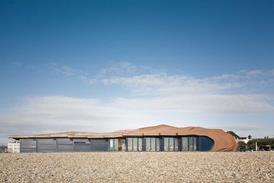

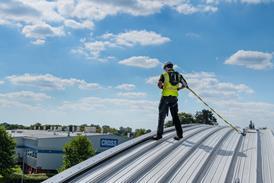


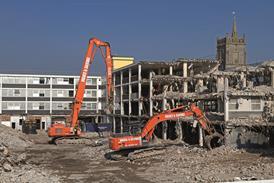



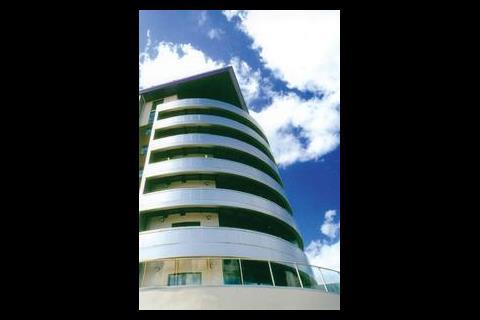
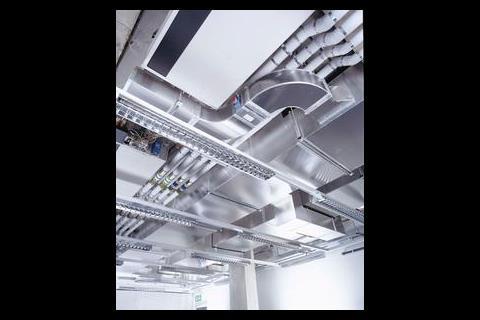


No comments yet